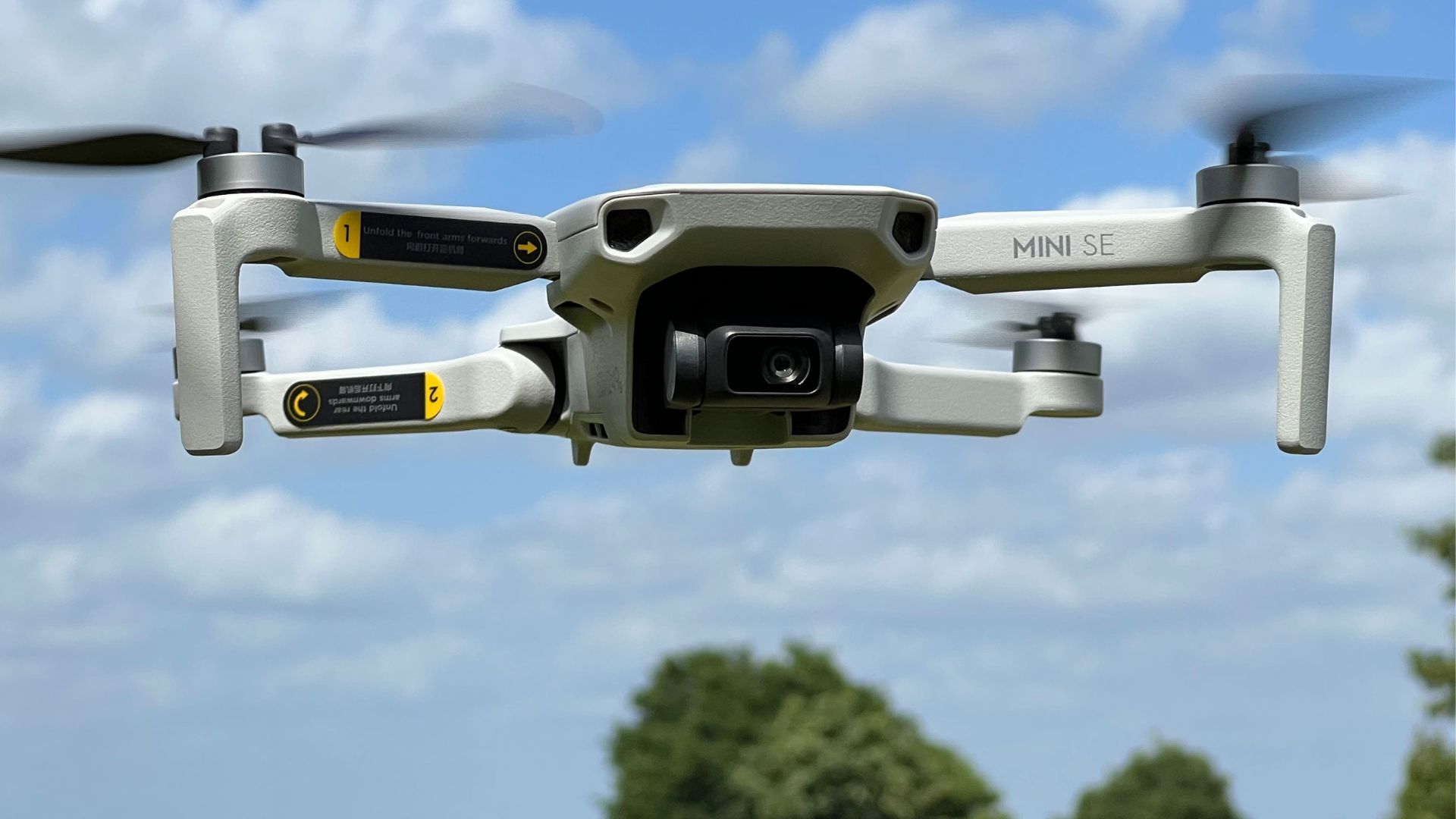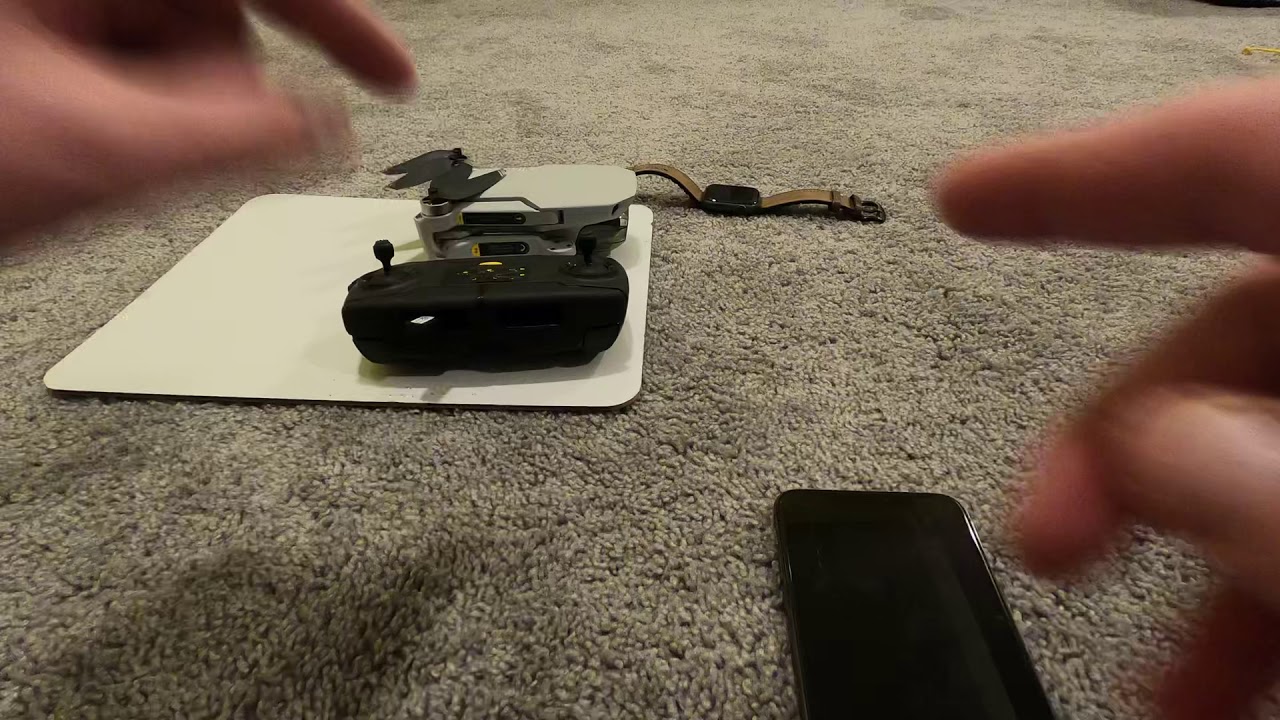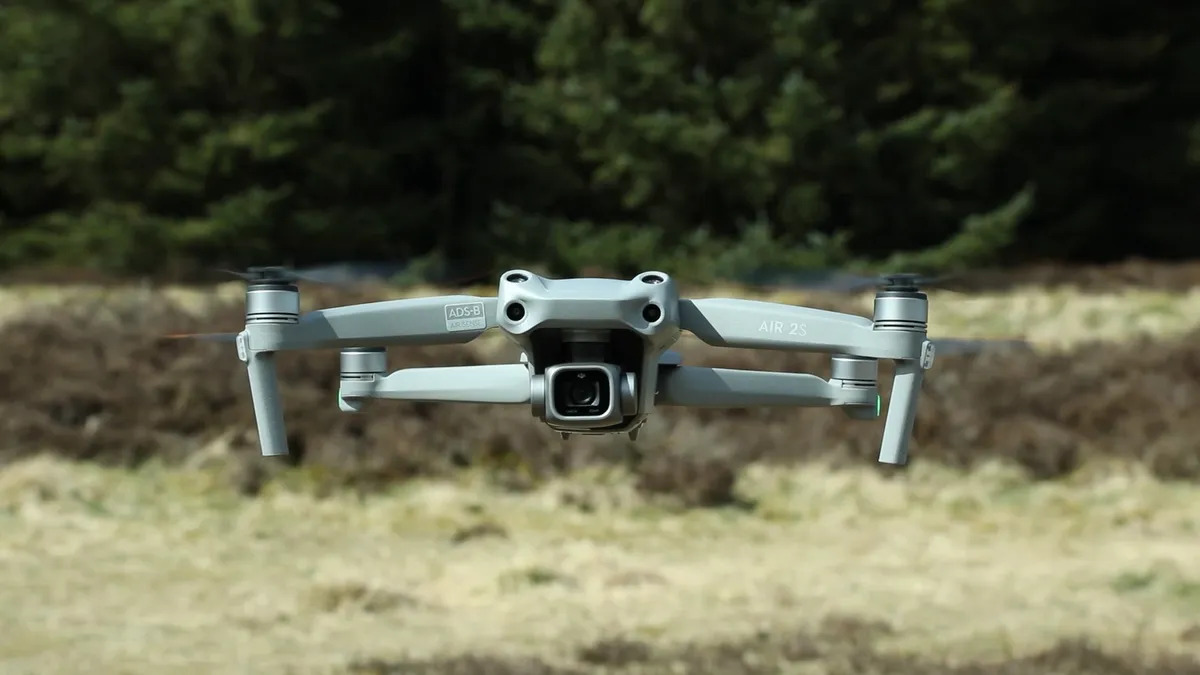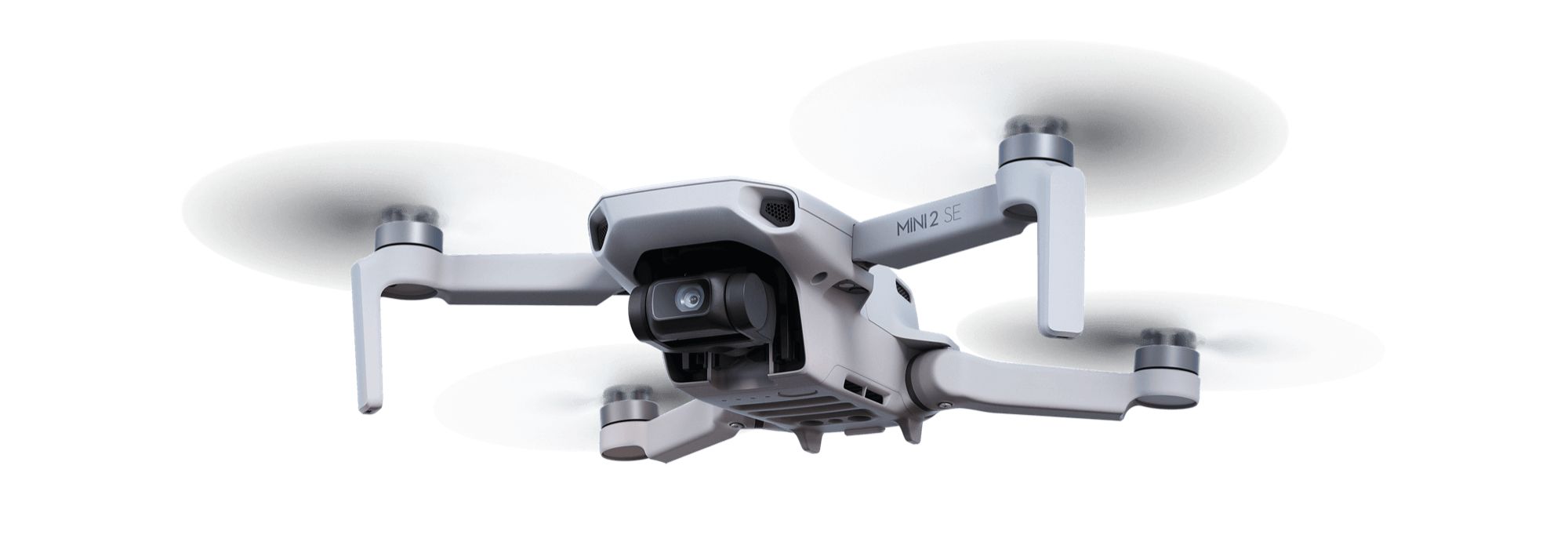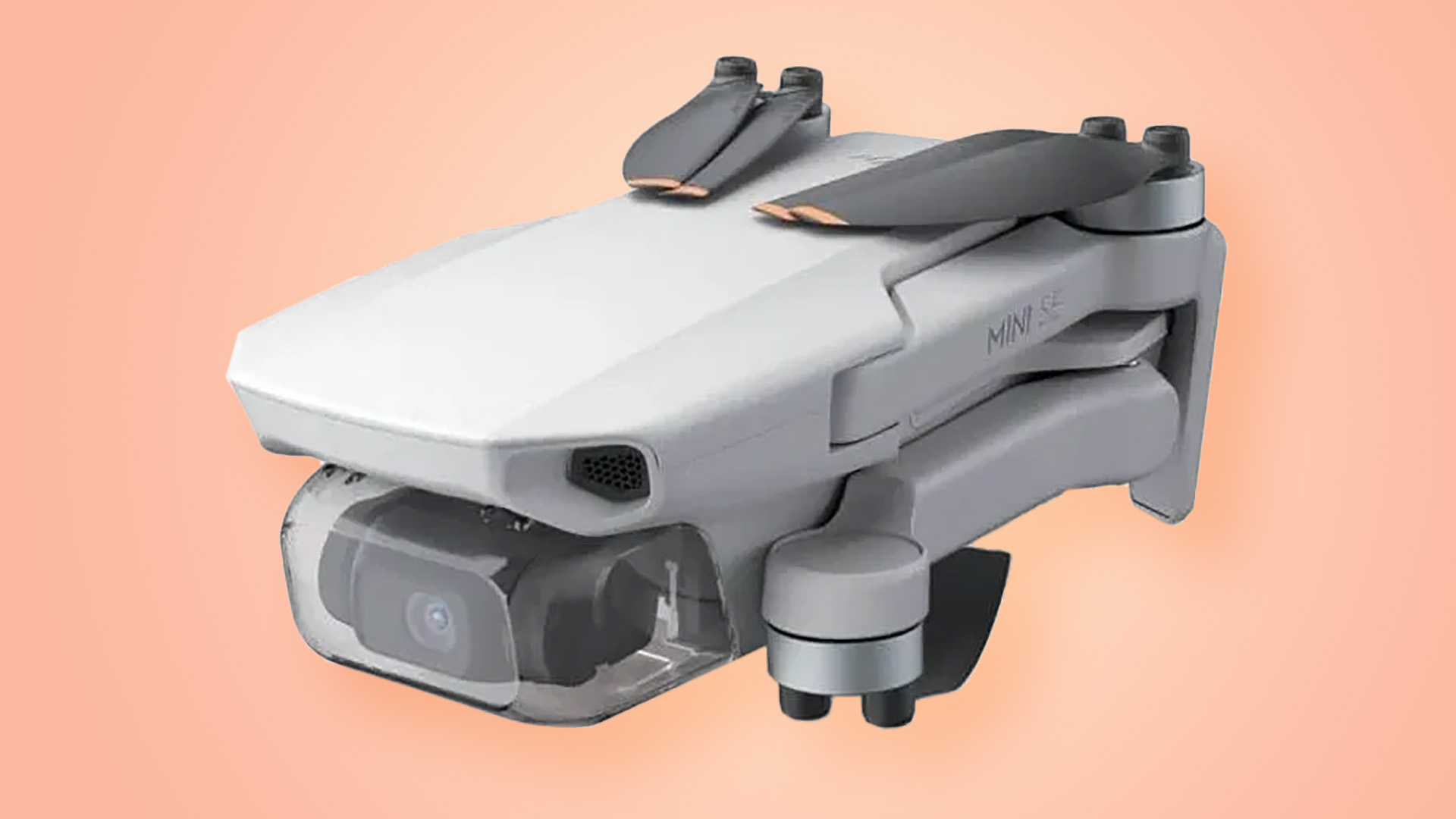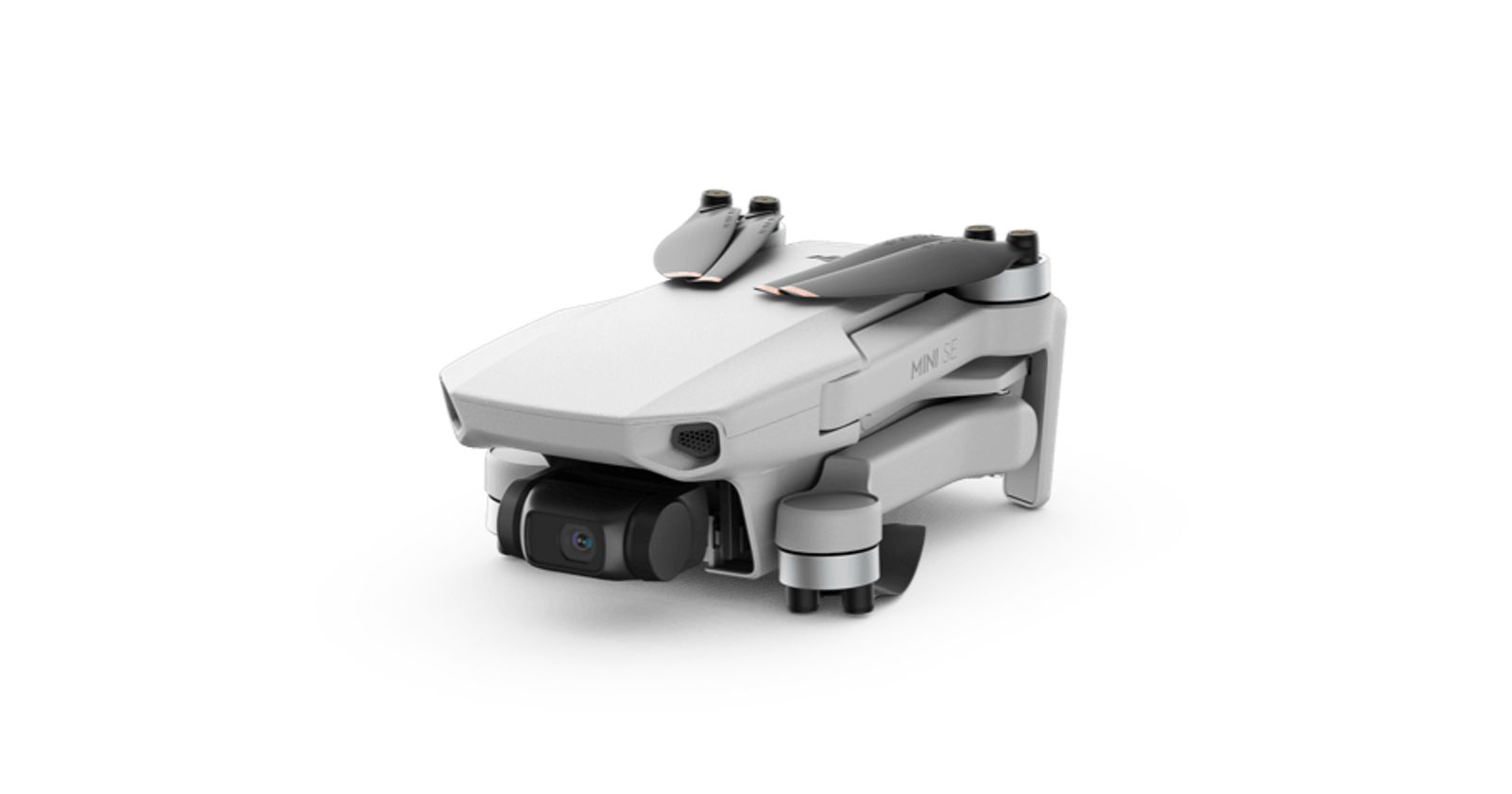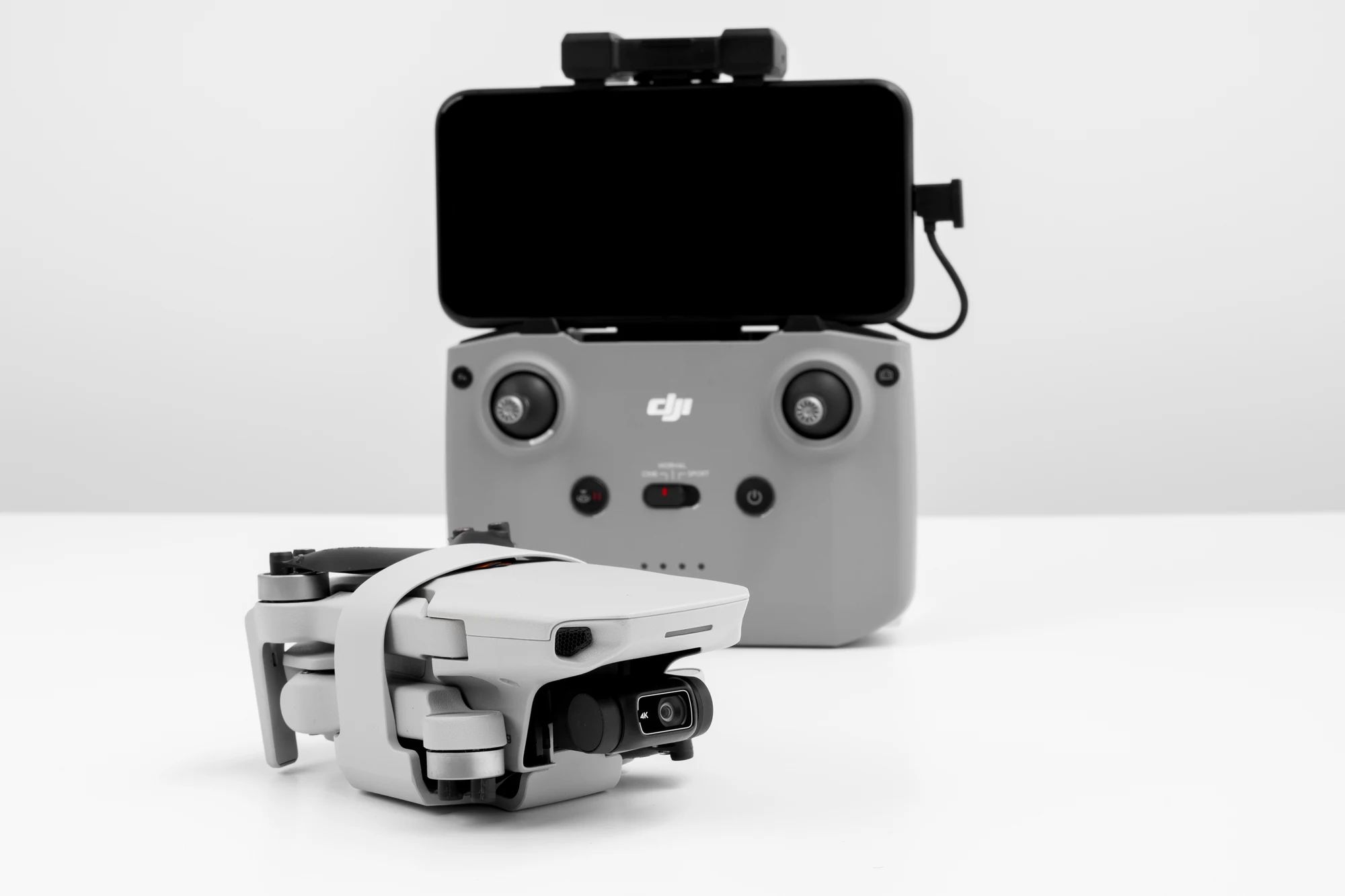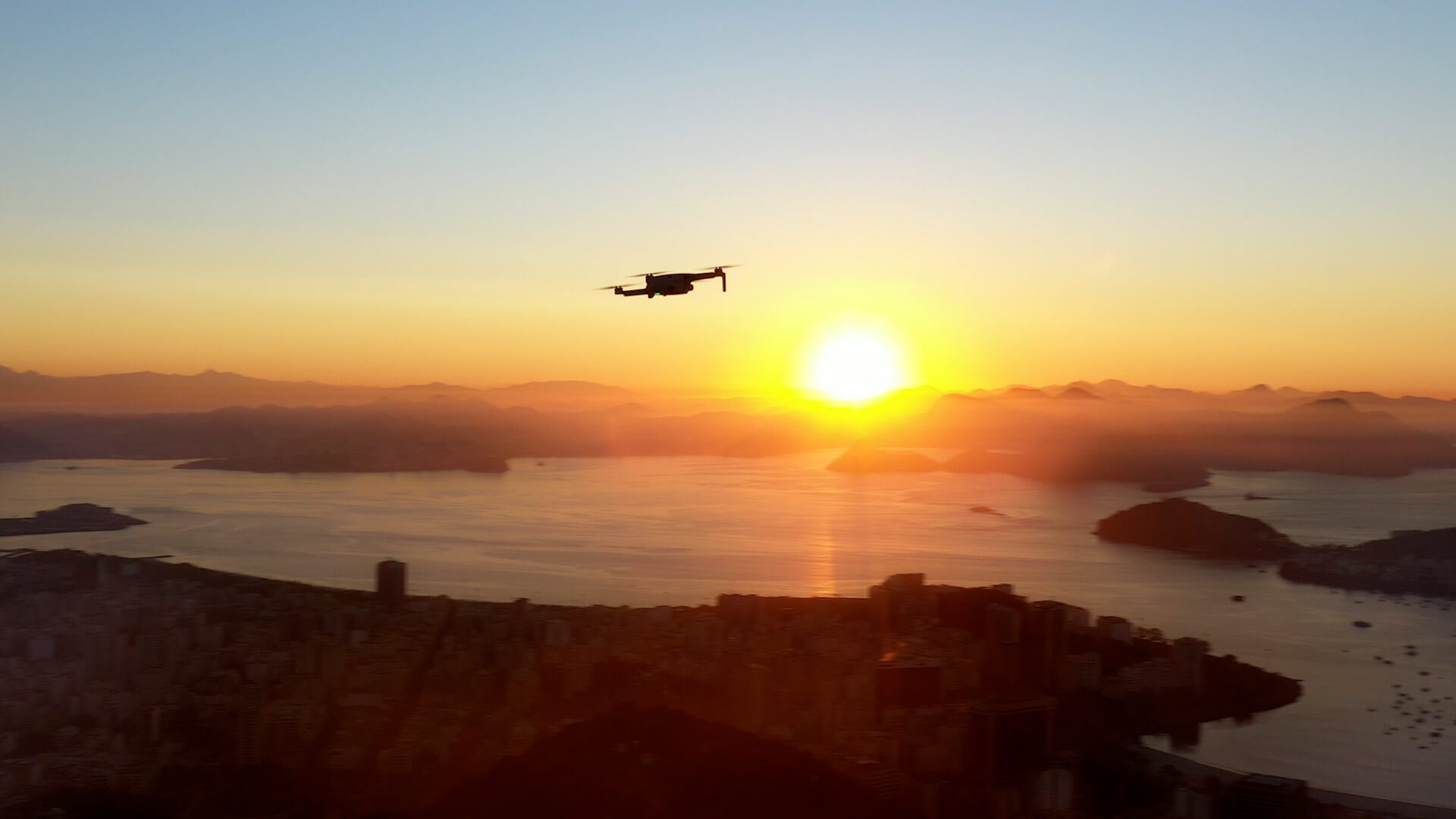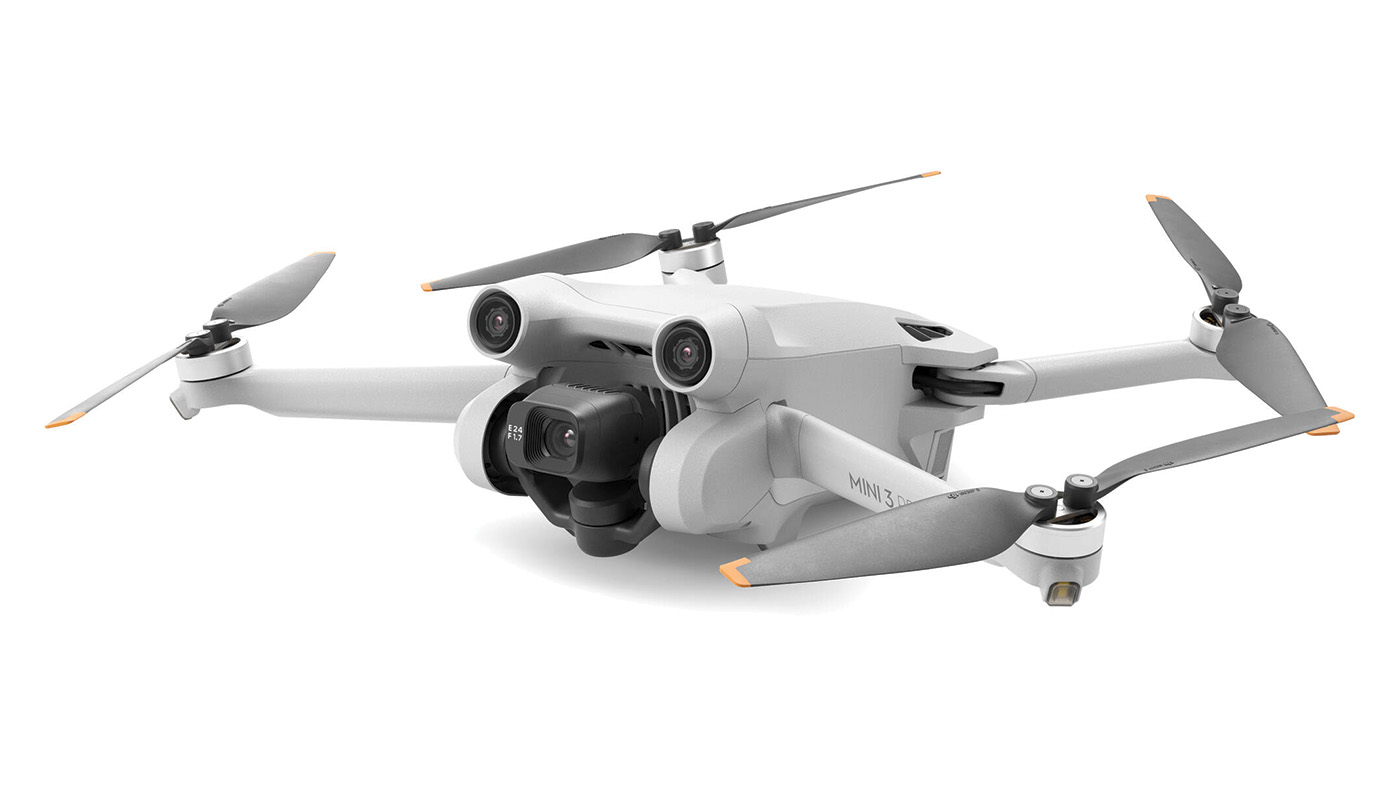Introduction
When it comes to aerial photography and videography, drone enthusiasts are always looking for the perfect balance between portability and performance. DJI, a leading manufacturer in the drone industry, has released the DJI Mini SE, a compact and affordable drone that promises to deliver impressive flight capabilities. One of the key aspects that drone enthusiasts consider when purchasing a new drone is its flight range – the distance the drone can travel from the remote controller before losing signal or running out of battery.
In this article, we will explore the factors that affect the flight range of drones in general and delve into the specific maximum flight range of the DJI Mini SE. Additionally, we will provide some tips on optimizing the flight range and discuss the factors that may reduce it. Furthermore, we will touch on the legal considerations and provide safety tips for flying the DJI Mini SE.
Whether you’re a professional photographer or a recreational drone enthusiast, understanding the flight range capabilities of the DJI Mini SE is crucial. So, let’s take a closer look and uncover how far this impressive drone can soar!
Factors Affecting the Flight Range
Several factors play a significant role in determining the flight range of a drone, including the DJI Mini SE. Understanding these factors can help you make informed decisions and optimize your drone’s flight range for your specific needs. Let’s explore the key factors:
- Transmission System: The quality and reliability of the drone’s transmission system greatly influence its flight range. The DJI Mini SE is equipped with a reliable transmission system that utilizes enhanced Wi-Fi technology, allowing for stable and long-distance control.
- Battery Life: The battery capacity and efficiency directly impact the flight range. The DJI Mini SE boasts a powerful battery that can provide up to 30 minutes of flight time, enabling longer distances to be covered.
- Obstacle Sensing: Drones equipped with obstacle sensing technology have the advantage of detecting and avoiding obstacles, which can affect flight range. The DJI Mini SE does not have obstacle sensing capabilities and requires careful navigation to avoid collisions.
- Atmospheric Conditions: Weather conditions such as wind speed and temperature can impact the flight range. Strong winds can reduce the drone’s forward speed and drain the battery faster, limiting the overall distance it can cover.
- Height and Line of Sight: The altitude at which the drone is flown and the line of sight between the drone and the remote controller also affect the flight range. Flying at higher altitudes can extend the range, but it is important to maintain a clear line of sight for safe and legal operation.
- Interference: Signal interference from nearby electronic devices or structures can disrupt the drone’s control and reduce its flight range. It is crucial to fly in areas with minimal interference to maximize the range.
By considering these factors and optimizing the conditions in which you fly your DJI Mini SE, you can maximize the potential flight range and capture breathtaking aerial shots.
DJI Mini SE’s Maximum Flight Range
The DJI Mini SE is renowned for its impressive flight capabilities despite its compact size. It offers a maximum flight range of up to 4 kilometers or approximately 2.5 miles. This range allows operators to explore vast outdoor areas and capture stunning aerial footage from a significant distance.
The DJI Mini SE achieves this impressive flight range by utilizing advanced transmission technology and a powerful battery system. Its enhanced Wi-Fi transmission system ensures stable and reliable communication between the drone and the remote controller, allowing for seamless control over longer distances.
In addition to its flight range, the DJI Mini SE also has a maximum flight altitude of 500 meters, or around 1,640 feet, above ground level. This altitude provides ample opportunities for capturing unique perspectives and sweeping landscapes.
It is important to note that the DJI Mini SE’s flight range and altitude are subject to certain regulatory restrictions and limitations. Many countries and regions have regulations that require drone operators to maintain visual line of sight (VLOS) with their aircraft. This means that the drone must be within the pilot’s sight at all times, limiting the effective range to what the pilot can see.
To ensure a safe and enjoyable flight experience, it is essential to comply with local laws and regulations regarding drone operation, including flight range and altitude limitations.
Now that we have explored the DJI Mini SE’s maximum flight range, let’s discuss some tips on optimizing the flight range and factors that may reduce it to ensure you have the best possible flying experience with this remarkable drone.
Optimizing Flight Range
To make the most of your DJI Mini SE’s flight capabilities and maximize its range, there are several steps you can take to optimize its performance. Consider the following tips to enhance your flight range:
- Choose the Right Environment: Select an open area with minimal obstacles and signal interference to allow for smoother and longer flights. Avoid flying near tall buildings, dense forests, or areas with high electromagnetic interference.
- Optimize Battery Usage: Ensure that the drone’s battery is fully charged prior to flight and avoid flying in extreme weather conditions, as they can drain the battery more quickly. Also, consider using spare batteries to extend your flight time.
- Adjust Flight Settings: Optimize your DJI Mini SE’s flight settings by adjusting parameters such as flight speed and payload. Slowing down the drone’s speed can conserve battery power and allow for longer flights.
- Keep the Drone Lightweight: Minimize the payload by removing any unnecessary accessories or attachments. The lighter the drone, the longer it can remain airborne and cover more distance.
- Maintain a Clear Line of Sight: Fly the DJI Mini SE in an area where you can maintain a clear visual line of sight. This not only complies with regulations but also ensures better control and awareness of your surroundings.
- Consider Wind Conditions: Keep an eye on the wind speed and direction before taking off. Flying against strong headwinds can significantly decrease the flight range. Opt for flying on calmer days for optimal performance.
- Upgrade Firmware: Regularly update the DJI Mini SE’s firmware to ensure it is running the latest software, which often includes performance improvements and bug fixes that can enhance flight range and stability.
By implementing these optimization strategies, you can extend the flight range of your DJI Mini SE and elevate your aerial photography and videography experiences.
Factors That May Reduce Flight Range
While the DJI Mini SE offers an impressive flight range, it’s essential to be aware of potential factors that can limit or reduce its capabilities. Understanding these factors will help you plan your flights accordingly and avoid any unexpected range limitations. The following are some factors that may reduce the flight range of your DJI Mini SE:
- Signal Interference: Flying in areas with numerous electronic devices or areas of high signal interference, such as urban environments or crowded events, can disrupt the drone’s control signals and reduce the effective flight range.
- Obstacles: The absence of obstacle avoidance sensors on the DJI Mini SE means that flying in areas with obstacles, such as trees, buildings, or power lines, increases the risk of collisions and may limit the flight range as you need to navigate around them.
- Environmental Conditions: Adverse weather conditions like strong winds, heavy rain, or extreme temperatures can impact the flight performance of the DJI Mini SE. Flying in these conditions may reduce the flight range and affect overall flight stability.
- Battery Health: As the drone’s battery ages, its capacity and performance may decrease, resulting in shorter flight times and reduced flight range. Regularly inspect and maintain your battery to ensure optimal performance.
- Height Limits: Depending on your location, there may be legal restrictions on how high you can fly your drone. Always abide by local regulations to avoid risking fines or accidents and to maintain safe and responsible flying practices.
- Radio Frequency Interference: In areas with heavy radio frequency (RF) interference, such as near military installations or broadcast towers, the DJI Mini SE’s connectivity and flight range may be affected. Be cautious when flying in these locations.
Being aware of these factors and taking necessary precautions will help you circumvent any limitations and ensure a safe and enjoyable flight experience with your DJI Mini SE.
Legal Considerations for Flying DJI Mini SE
Before taking to the skies with your DJI Mini SE, it is crucial to understand and comply with the legal regulations governing drone flight in your jurisdiction. Failure to abide by these regulations can result in fines, legal consequences, and potential risks to public safety. Here are some key legal considerations:
- Registration: Many countries require drone operators to register their drones with the relevant aviation authorities. Ensure that you follow the registration process specific to your country or region to legally operate your DJI Mini SE.
- Flight License: Some countries may require you to obtain a drone pilot license or certification to fly drones above a certain weight or in specific areas. Familiarize yourself with any licensing requirements and ensure compliance before operating your DJI Mini SE.
- Restricted Zones: Certain areas, such as airports, military bases, and government facilities, are designated as restricted or no-fly zones. Be aware of these restricted areas and respect the airspace restrictions to maintain aviation safety and security.
- Visual Line of Sight (VLOS): Many countries mandate that drone operators maintain a clear visual line of sight with their drone during flight. Keep your DJI Mini SE within your line of sight at all times to comply with VLOS regulations.
- Privacy and Data Protection: Respect the privacy rights of others when flying your DJI Mini SE and avoid capturing images or videos in areas where individuals have a reasonable expectation of privacy. Exercise caution when handling and sharing any footage to protect sensitive information.
- Local Regulations: Additionally, familiarize yourself with any local or regional regulations that may have specific requirements or restrictions on drone flight, including flight range and altitude limitations. Stay informed and adhere to these regulations to ensure responsible and legal drone operation.
Remember, it is your responsibility as a drone operator to be aware of and comply with all applicable laws and regulations. By doing so, you can enjoy flying your DJI Mini SE safely and responsibly while respecting the rights and safety of others.
Tips for Flying DJI Mini SE Safely
Flying the DJI Mini SE is an exciting experience, but it’s important to prioritize safety for yourself, others, and the drone. Here are some essential tips to ensure safe and responsible flying:
- Read the Manual: Familiarize yourself with the user manual provided by DJI. Understand the drone’s features, flight modes, and safety guidelines before taking off.
- Choose the Right Location: Select an open area away from people, buildings, and obstacles to minimize the risk of collisions and ensure a safe flight environment.
- Perform Pre-flight Checks: Before every flight, inspect the DJI Mini SE for any signs of damage or malfunctions. Ensure the battery is fully charged, and all components are properly attached and functioning.
- Keep Your Drone in Sight: Maintain a clear visual line of sight with the drone at all times. This allows you to monitor its flight path, identify potential hazards, and respond accordingly.
- Be Aware of Weather Conditions: Fly in optimal weather conditions with minimal wind, rain, or extreme temperatures. Adverse weather can affect the flight stability and reduce overall control.
- Respect No-Fly Zones: Avoid flying in restricted areas such as airports, military bases, or national parks. Familiarize yourself with local regulations and respect any restricted airspace limitations.
- Fly Responsibly: Consider and respect the privacy of others when capturing images or videos. Avoid flying over private properties without permission and be mindful of local regulations concerning privacy rights.
- Keep Emergency Procedures in Mind: Understand and practice emergency procedures, such as safely bringing the DJI Mini SE back to the ground in case of loss of control or low battery situations.
- Stay Updated on Laws and Regulations: Stay informed about any changes or updates to drone regulations in your area. Regularly check for new rules and requirements to ensure compliance with all applicable laws.
- Continue Learning: Invest time in improving your piloting skills and knowledge of drone operations. Consider joining educational programs or online communities where you can learn from experienced pilots.
By following these safety tips and adopting responsible flying practices, you can enjoy the exhilarating experience of flying the DJI Mini SE while maintaining safety and respect for others.
Conclusion
The DJI Mini SE offers an impressive flight range and remarkable capabilities for drone enthusiasts and aerial photography lovers alike. Understanding the factors that affect its flight range, optimizing its performance, and adhering to legal considerations are all essential for a safe and enjoyable flying experience.
By considering factors such as the transmission system, battery life, obstacles, and environmental conditions, you can optimize the flight range of your DJI Mini SE. Additionally, taking into account legal considerations such as registration, flight licenses, and restricted zones ensures responsible and legal drone operation.
Implementing the tips for flying the DJI Mini SE safely, such as reading the manual, performing pre-flight checks, and staying updated on laws and regulations, helps prioritize safety during every flight. By flying responsibly, respecting privacy rights, and maintaining visual line of sight, you can ensure the safety of others and maintain good practices as a drone pilot.
Whether you’re capturing stunning aerial imagery or exploring new heights, the DJI Mini SE empowers you to push the boundaries of creativity. By taking into account the various factors discussed in this article, you can make the most of its flight range, capture breathtaking shots, and enjoy an unforgettable flying experience.
Remember, safety should always be a top priority when operating the DJI Mini SE or any other drones. Stay informed, fly responsibly, and comply with the local regulations to ensure a safe and enjoyable drone flight experience.







